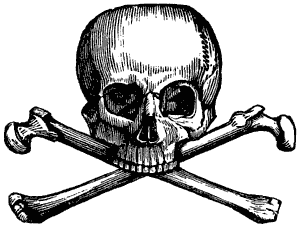Search
Freemasonry and Death

Death is an important symbol in the philosophy of Freemasonry.
To the outside observer some masonic art and renderings can seem morbid. To the uninitiated the repeated use of symbols of death, like the scythe and the skull and cross bones can give people pause. Some of that imagery may have given rise to the idea of Freemasonry being some sort of cult.
Like all Masonic symbols this imagery must be understood to see how it fits into the philosophy of Freemasonry. The obvious thing to point to is the legend of the temple builder that most Master Masons are familiar with. I would argue there is a greater reason why Freemasons are so concerned with death that we put those images on our Tracing Boards. The answer is simply Equality.
Death has been said by poet, philosopher, and yes Freemasonry to be the "Great Leveler." Everyone who is born will one day pass away, it is inevitable. When you start from that premise we are all the same. Whether you are the richest man in the world or have nothing but your footprints to remind the world you are there, when it comes to death we are all the same. Death comes for us no matter our station in life, our religious belief, our gender or our race.
Freemasonry deals little with what may come after death, it is the event which we all must face, our own mortality, that Freemasonry focuses in on. Freemasonry, on a fairly broad level, does not care what you believe awaits you after death. Freemasonry's philosophy deals with how you live your life up to the time of your passing. Almost Universally being a good person brings you reward after your death. Freemasonry creates a structure to remind every mason what those qualities are that makes a person "good" regardless what religion you may practice.
I won't go into the philosophy of good and bad in this article. I will simply offer the reminder that for a Freemason we should always strive to walk upright before the World. That when the day comes for each of us we will be remembered as a "Good and Upright Mason."
This article provided by Brother Eric C. Steele.